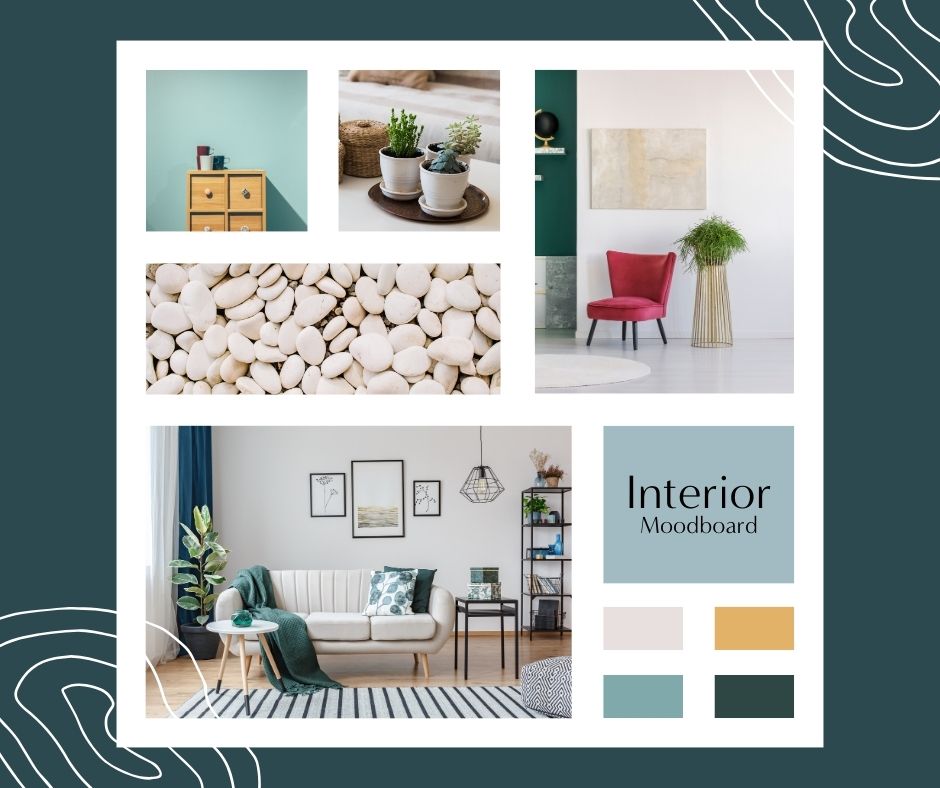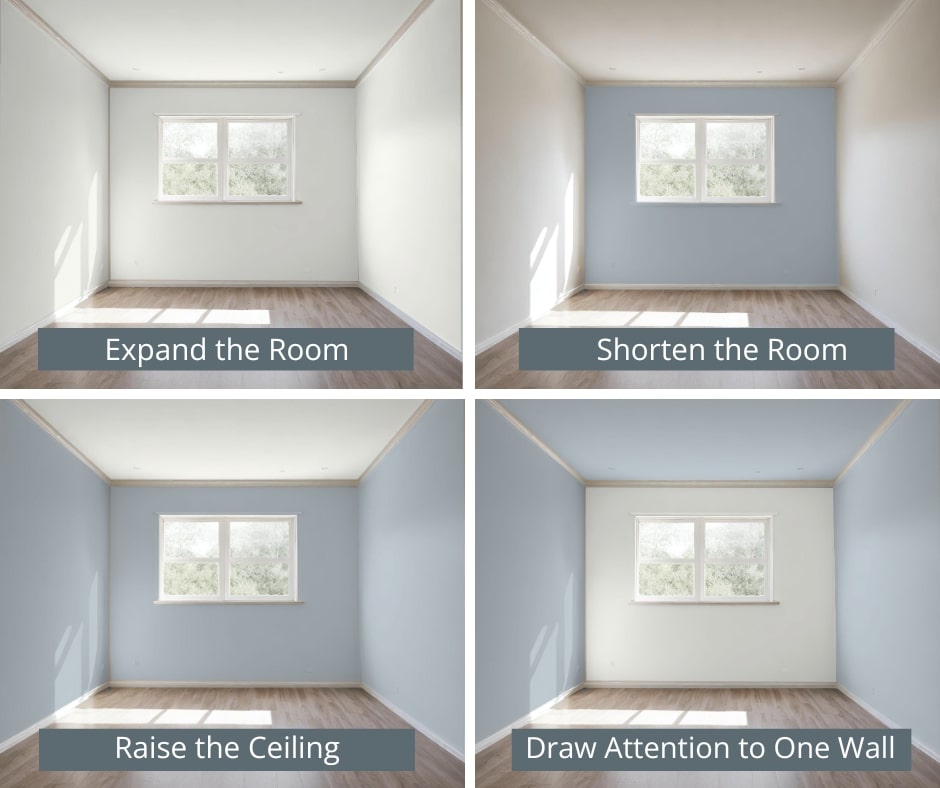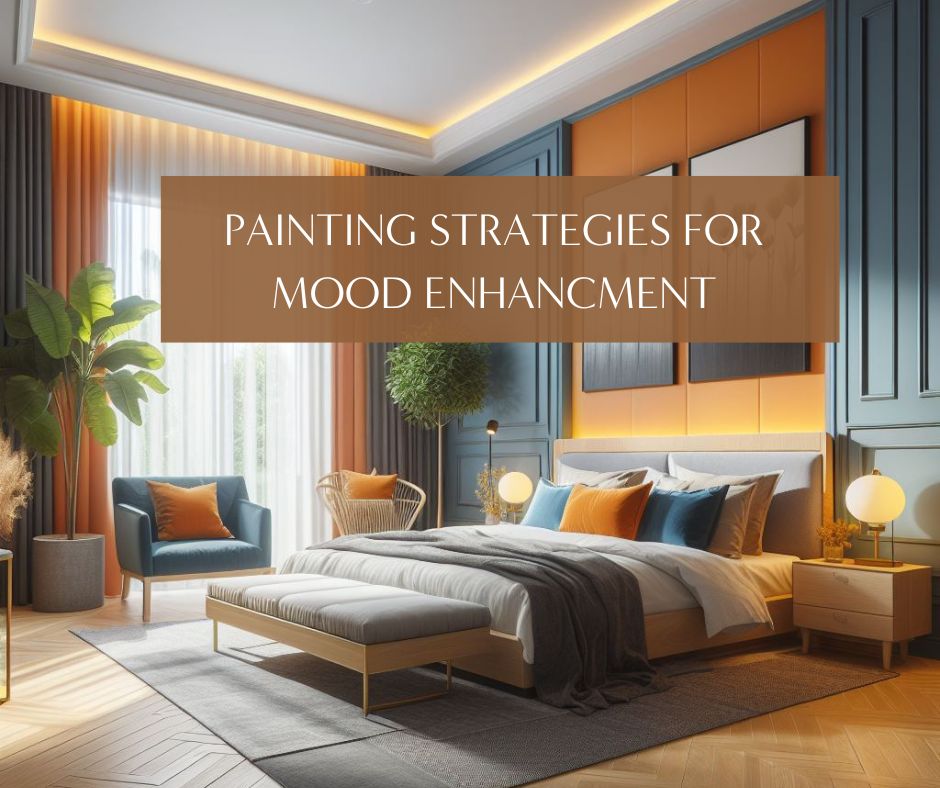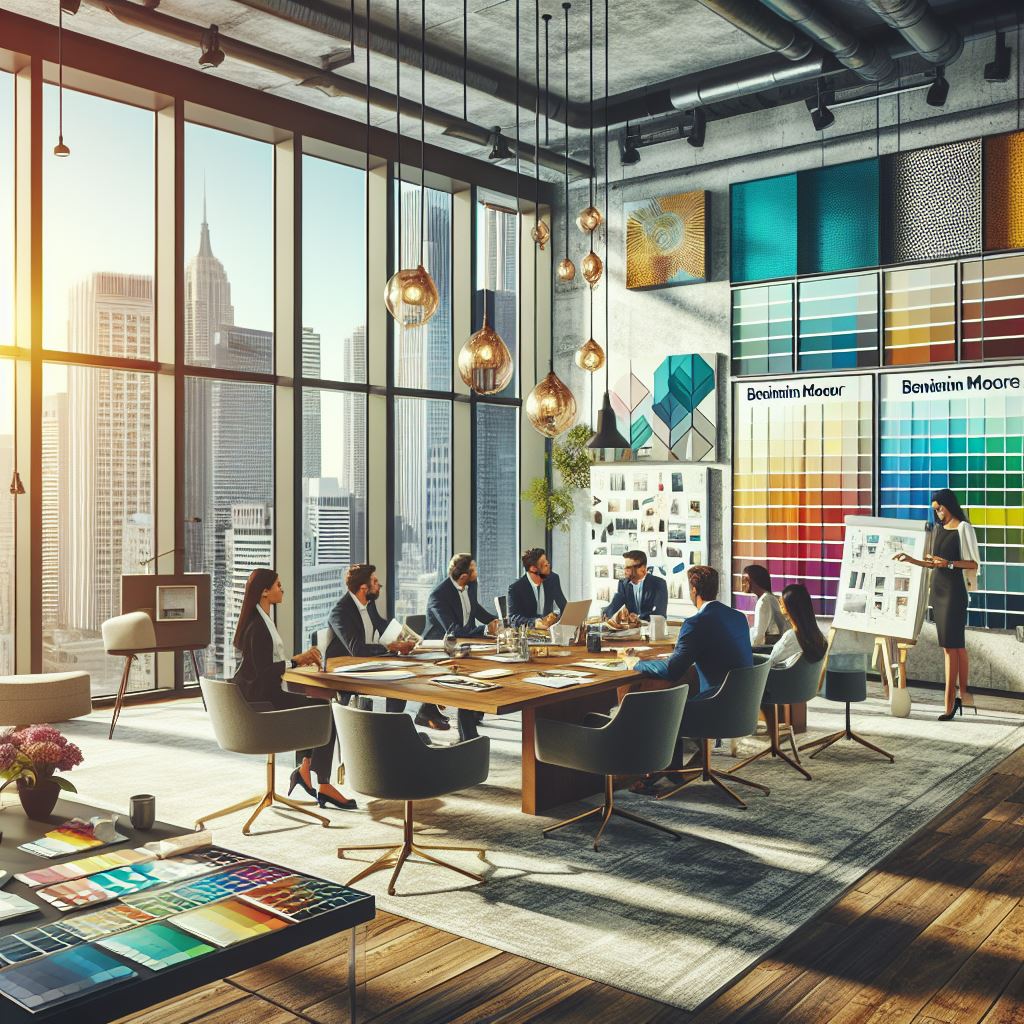Color Your Home: Painting Strategies for Mood Enhancement
Painting your home is not just a change of scenery; it's a science and an art that can dramatically affect your mood and emotions. In this guide, we'll explore how different colors influence feelings, offer expert painting tips for a stellar DIY project, and share insights from leaders in the design industry.
The Psychology Behind Colors
Color psychology studies how various hues can trigger emotional and physical responses. Here's how you can use this knowledge to enhance the atmosphere in your home:
- Blue: Create a haven of peace with blue shades that are ideal for bedrooms and bathrooms to promote calm and tranquility.
- Green: Mimic nature's palette in your home to evoke harmony and vitality—perfect for living spaces and home offices.
- Yellow: Invite joy and creativity into busy spaces like kitchens and dining rooms with this effervescent ColorColor.
- Red: Add a splash of red to revitalize areas of your home where excitement and warmth are desired—but use it sparingly to avoid sensory overload.
- Orange: Fuel conversations and creative thoughts in playrooms or home gyms with the energetic vibe of orange.
- Purple: Channel luxury and mindfulness with purple tones in personal sanctuaries or creative corners.
- Neutral Colors: Set a flexible foundation with neutrals, configuring a backdrop to suit various decor moods and additions.
Personalization Tips for Selecting Paint Colors
Selecting the right paint colors for your home is a profoundly personal decision, reflecting your personality, lifestyle, and preferences. Here are several tips to ensure the colors you choose resonate with your sense of self and comfort:
- Reflect on Your Personality: Consider colors that mirror your traits. For example, if you're energetic and vibrant, bold colors like orange or bright yellow suit you. Conversely, if you're more reserved or contemplative, softer shades like sage green or pale blue could be more your style.
- Assess Your Lifestyle: Your daily activities and use of your spaces should influence your color choices. Active, bustling households benefit from durable, darker colors that mask wear, while tranquil retreats call for lighter, calming shades.
- Consider Your Home's Lighting: Natural and artificial lighting will affect how paint colors look in your space. Use sample swatches to observe how different lighting conditions throughout the day change how colors appear in your rooms.
- Use Color to Shape Your Space: Colors can influence the perception of space; light colors can make small rooms feel more extensive and airy, while dark colors can lend a cozy, more intimate feel to larger areas.
- Create a Mood Board: Collect images, fabric swatches, and other inspirations that appeal to you. This collage can serve as a visual guide, helping you visualize how various colors interact and complement each other.
- Experiment with Accent Walls: If you're undecided about a color, consider painting an accent wall. This less committal option allows you to experience living with a color before fully committing to it throughout a room or home.
- Think Long-Term: While it's tempting to go with the latest trends, remember that paint colors are something you'll live with for years. Choose colors that you'll love now and in the future, making your home a true reflection of you.

By carefully considering these aspects, you can select paint colors that look beautiful and create a living space that feels uniquely yours, fostering a profound sense of comfort and ownership.
Visual Illusions: Crafting Space with Color
Color not only impacts mood but holds the power to alter the perception of space through visual illusions, making rooms feel larger, smaller, cozier, or more open. Understanding these effects enables the strategic use of ColorColor to enhance the architectural features of your home, crafting environments that genuinely reflect your desired ambiance.
- Expanding Small Spaces: Light and bright colors, like soft blues, whites, or pale greys, reflect more light, making walls appear to recede and rooms feel more spacious and airy. This technique is perfect for small bedrooms or apartments where maximizing the perception of space is crucial.
- Adding Coziness to Large Areas: Darker colors absorb light rather than reflect it, drawing walls closer and creating a feeling of warmth and intimacy. Deep reds, navy blues, or rich greens are ideal for making prominent, sparse rooms feel more enclosed and cozy.
- Highlighting Architectural Details: Strategic use of Color can draw attention to a home's unique architectural features. Painting moldings, doorframes, or window sills with contrasting colors can accentuate these elements, adding character and depth to a space. For example, bright white trim against a darker wall can make the details pop, enhancing the room's architectural beauty.
- Creating Continuity or Definition: Using the same color palette throughout an open-concept space can create continuity, making it feel unified and harmonious. Alternatively, different shades or complementary colors can define separate areas within one more prominent space, such as designating a dining area from a living area in an open-plan home.

By leveraging the optical illusions created by ColorColor, you can manipulate space to better meet your needs and preferences, transforming your home into a place that looks and feels precisely as you wish. Whether aiming to enlarge a cramped study, cozy up an overly spacious living room, or highlight the charming details of your home's architecture, ColorColor is an essential tool in your design arsenal.
Trends vs. Timelessness: Balancing the Spectrum
In-home design, the dichotomy between trendy colors and timeless choices presents an intriguing challenge. On the one hand, incorporating trendy colors can refresh a space, imbuing it with a contemporary edge that resonates with current aesthetics. However, these choices must often be updated as tastes and trends evolve. On the other hand, timeless colors promise longevity and versatility, ensuring space remains relevant and appealing.
The key to navigating this divide is achieving a balance that leverages the best of both worlds. One approach is to anchor a room with neutral or classic hues as a versatile backdrop. These foundational colors maintain the room's enduring appeal. Then, introduce trendy colors through easily changeable elements like accent walls, accessories, textiles, or artwork. This strategy allows for the infusion of contemporary flair without committing to a full-scale renovation when preferences shift.
Additionally, consider the emotional and psychological impacts of ColorColor when selecting hues for your home. Timeless colors often evoke a sense of stability and calm. In contrast, trendy colors can inject vitality and dynamism into a space.
Remember, the ultimate goal in home design is to create a living environment that reflects personal style and adapts to changing lifestyles. By thoughtfully integrating both timeless and trendy colors, you craft a space that is stylish, warmly personal, and adaptable, standing the test of time in both function and aesthetics.
Color Combinations: Harmonizing Hues for Cohesive Spaces
Choosing the right color combinations can dramatically transform your home, creating atmospheres that range from serene to vibrant. To achieve a visually pleasing and harmonious space, consider utilizing complementary, analogous, or monochromatic color schemes, each capable of evoking different moods and styles.
- Complementary Color Schemes: This scheme involves colors opposite each other on the color wheel, such as blue and orange or red and green. Complementary colors create a dynamic contrast, bringing vibrancy and energy into a space. When using this scheme, choose one ColorColor as the dominant hue and the other for accents to avoid overwhelming the room.
- Analogous Color Schemes are created by using colors that are next to each other on the color wheel, like blue, blue-green, and green. This scheme is known for its soothing and harmonious quality, making it ideal for spaces meant for relaxation. To maintain balance, select one main Color, use the second Color as support, and the third as an accent.
- Monochromatic Color Schemes: Monochromatic schemes focus on a single color but use different shades, tones, or tints of that Color. This approach creates depth and unity, offering a sophisticated and elegant aesthetic. When applying a monochromatic scheme, incorporate various textures and materials to prevent the space from feeling flat or monotonous.
Incorporating these color schemes into your home enables you to create environments that reflect your personality while maintaining a cohesive look. Whether aiming for the calmness of analogous colors, the boldness of complementary pairs, or the elegance of monochromatic shades, thoughtful consideration of these schemes can lead to beautifully curated spaces.
Painting Techniques to Know
Equipped with a brush, mastering the proper techniques can be the key to achieving professional-looking results. Essential methods to focus on include:
- Proper Prep Work: Complete the priming for a polished finish.
- Cutting-in: Brush up on your skills for crisp edges without bleed-overs.
- Roller Know-how: Prevent lap marks and uneven coverage with these roller tips.
- Faux Finishes: Create texture and personality with simple yet striking faux techniques.
- Color Washing: Using a color washing method, soften and add character to walls with subtler hues.
DIY Tips for Home Painters
Looking to take the color plunge at home? Here are some strategies for incorporating mood-enhancing colors and techniques into your living spaces:
- Understand the impact of ColorColor and choose according to the ambiance you wish to create.
- Play with accent walls if you're shy about bold colors but want to add some zest to your room.
- Practice makes perfect—hone your technique on a less conspicuous project first.
- Use painter's tape for cleaner lines, especially when trying more intricate designs.
- Don't forget ceilings and trims—they can tie a room together or provide a surprising pop.
- Accessorize accordingly—throw pillows, rugs, and art can complement your new wall colors.
Expert Insights
A renowned interior designer, Joanna Gaines, suggests, "Painting your home is a personal experience. It's about creating a place that reflects who you are and what you love."
Dee Schlotter, the Senior Color Marketing Manager at PPG Paints, deeply understands how Color can influence space and mood. She states, "ColorColor is not just a part of the aesthetic. It's integral to how we experience space — affecting our mood, emotions, and well-being. In our trend forecasting, we look for colors that bring harmony into our lives amidst the hustle of the modern world." Schlotter's perspective emphasizes the psychological impact of color choices. It highlights the importance of selecting hues that create a sense of balance and tranquility in our living environments.
Leatrice Eiseman, the Executive Director of the Pantone Color Institute and a luminary in the field of color psychology, eloquently sums up the essence of Color'sColor's impact on design and emotion, stating, "ColorColor is a language and an instant communicator. It can instantly set a mood, convey an emotion, evoke a psychological response, or inspire people to take action." This insight underscores the profound role that ColorColor plays not just in the aesthetics of a space but in shaping the psychological ambiance and influencing the behavior of its inhabitants. Eiseman's perspective provides a compelling reminder of the power of color selection in creating environments that genuinely resonate with individuals' emotional and psychological needs.
Conclusion
In the vast expanse of interior design, Color is a central pillar, capable of transforming mere spaces into reflections of our deepest selves. This guide has traversed the spectrum of color schemes, painting techniques, and profound insights from industry experts, aiming to arm you with the knowledge to curate spaces that resonate with your unique personality and aspirations. Whether you're drawn to the soothing tranquility of analogous colors, the dramatic flair of complementary schemes, or the sophisticated elegance of monochromatic tones, the power of Color in shaping our living environments is undeniable. By incorporating the expert strategies and techniques shared, you can elevate your home from a functional space to an emotional sanctuary, where every hue speaks volumes of your personal narrative. Remember, every brush stroke is a step towards manifesting your vision. In the canvas of your home, you are the artist, and Color is your medium. Choose boldly, paint wisely, and transform your space into a testament to your beauty and style.
Schedule Your Free Estimate For Your Interior Painting Project
If you're inspired to breathe new life into your home with the power of color, yet daunted by the prospect of undertaking such a project alone, TRICO PAINTING is here to guide you every step of the way. Our team of experienced professionals offers a comprehensive approach, from choosing the perfect color scheme that reflects your personality and lifestyle, to applying immaculate painting techniques for a flawless finish. Begin your home transformation journey by learning more about our services and scheduling a complimentary estimate. We're eager to work with you to turn your vision into reality. Click here to schedule your free estimate with TRICO PAINTING today.


